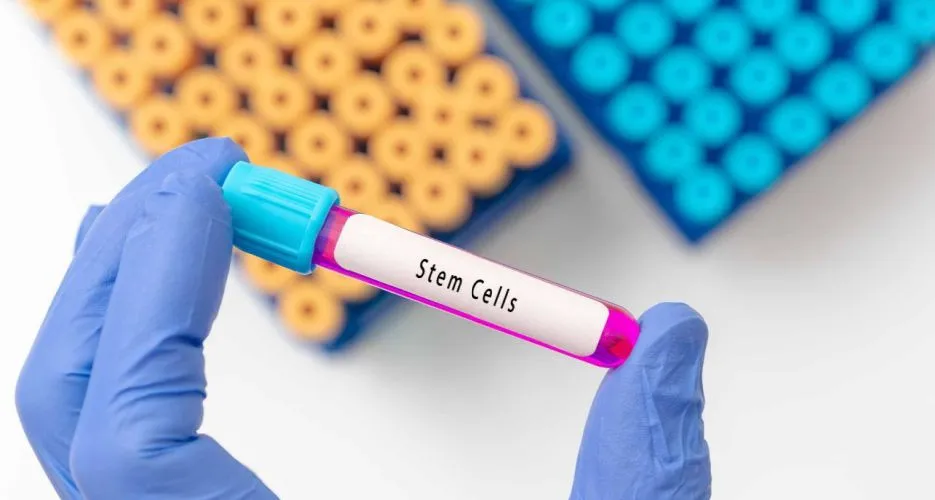Making Watch and Wait Obsolete for Precursor Myeloma Patients

Dr. Irene Ghobrial, myeloma specialist and researcher at Dana Farber Cancer Institute, is passionate about furthering research in the MGUS and smoldering myeloma fields.
At the Boston Myeloma Round Table on September 16, 2023, Dr. Ghobrial shared how she and her research team are working to make "watch and wait" obsolete in the precursor myeloma field.
Precursor myeloma patients are often frustrated when they hear that there is a risk of active cancer in their future, and yet virtually the only instructions given to them are to "watch and wait".
Although lenalidomide and dexamethasone have been approved for high-risk smoldering myeloma treatment, there's some debate about the treatment's effectiveness in delaying progression and increasing the overall survival of the treated precursor patient.
Otherwise, participating in a clinical trial is the only treatment option currently available for MGUS or smoldering myeloma patients (of all risks).
It's a delicate decision for myeloma physicians to make and one that Dr. Ghobrial realizes is not an easy choice. Many precursor myeloma patients won't ever progress to active multiple myeloma, and treating them with intense medications can cause toxic, unwanted side effects or perhaps even cause a second cancer. The risk might not outweigh the reward.
Dr. Ghobrial and her team are working hard to identify which precursor myeloma patients will progress to active myeloma, therefore identifying which of the patients they should treat.
Learn more by watching her presentation or reading the summary below.
Prevalence of MGUS
- Very few physicians detect MGUS.
- 3% of the general population under 50 years old is diagnosed with MGUS.
- 1.7% of the population in those 50-59 years old is diagnosed with MGUS.
- >5% of people over 70 years old are diagnosed with MGUS.
- Males are more likely to be diagnosed with MGUS than women are.
Over the last 20 years, many things have changed in the world of treatment for active myeloma.
One thing that hasn’t changed is how early we treat precursor myeloma. The standard of care continues to be watch and wait. That would have made sense 20-30 years ago when palliative care was fine and treatment options were limited.
Today, with our amazing treatment options, making precursor patients watch and wait doesn’t make sense anymore. The cure to myeloma could be found in treating it in its earlier stages if it is caught earlier.
What are MGUS and Smoldering Myeloma?
MGUS (monoclonal gammopathy of undetermined significance) and smoldering myeloma are what are known as precursor conditions to active multiple myeloma. They are technically not defined as cancer but rather a precursor condition of cancer.
Dr. Robert (Bob) Kyle coined the term MGUS. He worked to collect data through voluntary blood samples in order to learn more about this precursor disease to active myeloma.
African Americans have a three to four times higher prevalence of precursor diseases of multiple myeloma.
The risk of progressing from MGUS to active myeloma is quite low; in fact, it's at 1% per year for all MGUS patients. People could have MGUS for 20 years and then progress to active myeloma, so close monitoring is necessary.
Those with precursor disease should be monitored at least annually.
Smoldering myeloma was also coined by Dr. Robert Kyle. The word smoldering is the perfect word for it. It's like it's almost on fire, and you need to be constantly watching it. The current definition is a little arbitrary.
10% plasma cells in your bone marrow would indicate smoldering myeloma. But we all know that bone marrow biopsies can be patchy, so more investigation is needed in order to define and diagnose your smoldering myeloma.
In general, if you have enough cancer cells in your bone marrow, that means that it's starting to grow and cause problems. You have a greater risk of developing active myeloma in your lifetime, so greater research is needed to see how to slow down or prevent progression.
Why Is More Not Being Done to Prevent or Delay Smoldering Myeloma Progression?
We scan for breast cancer, we scan for colon cancers, but why do we not screen for multiple myeloma or other blood cancers? It’s a simple blood test.
Why are we not telling your myeloma doctors that “you’re crazy” for suggesting watch and wait? We should be advocating that they do more now. Even if that means more observational clinical trials, at least more headway would be made for this population.
The Dana Farber Research Team is determined to make a difference in this field so that precursor myeloma patients aren't left with only "watch or wait".
Their three initiatives are:
1. Screen early- don’t watch and wait.
2. Determine risk stratification of the precursor patient population. Which ones will progress?
3. After identifying those who are most likely to progress, introduce early intervention to prevent or delay progression.
Screen Early
To complete their first initiative of "screen early", the Dana Farber team created the PCROWD study to test those who are at higher risk for myeloma or have direct family members with multiple myeloma.
Here is some data from the study so far:
- 3,870 PCROWD (includes those with precursor myeloma)
- 12,592 PROMISE participants (includes those of African descent and those with a direct family member diagnosed with multiple myeloma over 30 years old)
- 10,200 samples banked
Risk Stratification
When you have MGUS or smoldering myeloma, it's normal to wonder what your personal risk of progressing is. Unfortunately, this is not linear. You could have completely stable disease for decades; without apparent reason, it suddenly progresses.
The Dana Farber Cancer Institute team is working to risk stratify the patient data.
They separate patients by age, gender, hemoglobin, etc., and they would like to add genetic profiling to have a clearer, bigger picture of risk.
Their research will also include tumor intrinsic regulators of progression. By taking cells from blood samples or bone marrow biopsy and performing Next-Generation Sequencing of the patient’s disease DN, they can find every single change in the genetic DNA of the disease.
By performing whole genome sequencing (which is more determinate than the standard FISH testing), they can better identify markers within patients that would cause them to have a higher risk of progressing and identify them. Other tests to help stratify precursor myeloma patients' risk include single-cell sequencing.
This is cutting-edge innovation and technology in the myeloma world, as it’s finally answering big questions like
- What genetics are leading to further myeloma progression?
- How can we determine which patients are going to progress?
- How can we truly determine prognosis?
- What treatments work best for these patients?
Early Intervention
Your immune system is very important to protect you from progressing and getting too sick on treatment.
There are alterations in the immune system as early as MGUS. Vaccines and other immunotherapies are also on the horizon for “treating” precursor disease and stopping progression.
So much has happened in the past ten years. We are headed in the right direction and smarter than we were before. Watch and wait won't also be the option for precursor myeloma patients!
Dr. Irene Ghobrial, myeloma specialist and researcher at Dana Farber Cancer Institute, is passionate about furthering research in the MGUS and smoldering myeloma fields.
At the Boston Myeloma Round Table on September 16, 2023, Dr. Ghobrial shared how she and her research team are working to make "watch and wait" obsolete in the precursor myeloma field.
Precursor myeloma patients are often frustrated when they hear that there is a risk of active cancer in their future, and yet virtually the only instructions given to them are to "watch and wait".
Although lenalidomide and dexamethasone have been approved for high-risk smoldering myeloma treatment, there's some debate about the treatment's effectiveness in delaying progression and increasing the overall survival of the treated precursor patient.
Otherwise, participating in a clinical trial is the only treatment option currently available for MGUS or smoldering myeloma patients (of all risks).
It's a delicate decision for myeloma physicians to make and one that Dr. Ghobrial realizes is not an easy choice. Many precursor myeloma patients won't ever progress to active multiple myeloma, and treating them with intense medications can cause toxic, unwanted side effects or perhaps even cause a second cancer. The risk might not outweigh the reward.
Dr. Ghobrial and her team are working hard to identify which precursor myeloma patients will progress to active myeloma, therefore identifying which of the patients they should treat.
Learn more by watching her presentation or reading the summary below.
Prevalence of MGUS
- Very few physicians detect MGUS.
- 3% of the general population under 50 years old is diagnosed with MGUS.
- 1.7% of the population in those 50-59 years old is diagnosed with MGUS.
- >5% of people over 70 years old are diagnosed with MGUS.
- Males are more likely to be diagnosed with MGUS than women are.
Over the last 20 years, many things have changed in the world of treatment for active myeloma.
One thing that hasn’t changed is how early we treat precursor myeloma. The standard of care continues to be watch and wait. That would have made sense 20-30 years ago when palliative care was fine and treatment options were limited.
Today, with our amazing treatment options, making precursor patients watch and wait doesn’t make sense anymore. The cure to myeloma could be found in treating it in its earlier stages if it is caught earlier.
What are MGUS and Smoldering Myeloma?
MGUS (monoclonal gammopathy of undetermined significance) and smoldering myeloma are what are known as precursor conditions to active multiple myeloma. They are technically not defined as cancer but rather a precursor condition of cancer.
Dr. Robert (Bob) Kyle coined the term MGUS. He worked to collect data through voluntary blood samples in order to learn more about this precursor disease to active myeloma.
African Americans have a three to four times higher prevalence of precursor diseases of multiple myeloma.
The risk of progressing from MGUS to active myeloma is quite low; in fact, it's at 1% per year for all MGUS patients. People could have MGUS for 20 years and then progress to active myeloma, so close monitoring is necessary.
Those with precursor disease should be monitored at least annually.
Smoldering myeloma was also coined by Dr. Robert Kyle. The word smoldering is the perfect word for it. It's like it's almost on fire, and you need to be constantly watching it. The current definition is a little arbitrary.
10% plasma cells in your bone marrow would indicate smoldering myeloma. But we all know that bone marrow biopsies can be patchy, so more investigation is needed in order to define and diagnose your smoldering myeloma.
In general, if you have enough cancer cells in your bone marrow, that means that it's starting to grow and cause problems. You have a greater risk of developing active myeloma in your lifetime, so greater research is needed to see how to slow down or prevent progression.
Why Is More Not Being Done to Prevent or Delay Smoldering Myeloma Progression?
We scan for breast cancer, we scan for colon cancers, but why do we not screen for multiple myeloma or other blood cancers? It’s a simple blood test.
Why are we not telling your myeloma doctors that “you’re crazy” for suggesting watch and wait? We should be advocating that they do more now. Even if that means more observational clinical trials, at least more headway would be made for this population.
The Dana Farber Research Team is determined to make a difference in this field so that precursor myeloma patients aren't left with only "watch or wait".
Their three initiatives are:
1. Screen early- don’t watch and wait.
2. Determine risk stratification of the precursor patient population. Which ones will progress?
3. After identifying those who are most likely to progress, introduce early intervention to prevent or delay progression.
Screen Early
To complete their first initiative of "screen early", the Dana Farber team created the PCROWD study to test those who are at higher risk for myeloma or have direct family members with multiple myeloma.
Here is some data from the study so far:
- 3,870 PCROWD (includes those with precursor myeloma)
- 12,592 PROMISE participants (includes those of African descent and those with a direct family member diagnosed with multiple myeloma over 30 years old)
- 10,200 samples banked
Risk Stratification
When you have MGUS or smoldering myeloma, it's normal to wonder what your personal risk of progressing is. Unfortunately, this is not linear. You could have completely stable disease for decades; without apparent reason, it suddenly progresses.
The Dana Farber Cancer Institute team is working to risk stratify the patient data.
They separate patients by age, gender, hemoglobin, etc., and they would like to add genetic profiling to have a clearer, bigger picture of risk.
Their research will also include tumor intrinsic regulators of progression. By taking cells from blood samples or bone marrow biopsy and performing Next-Generation Sequencing of the patient’s disease DN, they can find every single change in the genetic DNA of the disease.
By performing whole genome sequencing (which is more determinate than the standard FISH testing), they can better identify markers within patients that would cause them to have a higher risk of progressing and identify them. Other tests to help stratify precursor myeloma patients' risk include single-cell sequencing.
This is cutting-edge innovation and technology in the myeloma world, as it’s finally answering big questions like
- What genetics are leading to further myeloma progression?
- How can we determine which patients are going to progress?
- How can we truly determine prognosis?
- What treatments work best for these patients?
Early Intervention
Your immune system is very important to protect you from progressing and getting too sick on treatment.
There are alterations in the immune system as early as MGUS. Vaccines and other immunotherapies are also on the horizon for “treating” precursor disease and stopping progression.
So much has happened in the past ten years. We are headed in the right direction and smarter than we were before. Watch and wait won't also be the option for precursor myeloma patients!

about the author
Audrey Burton-Bethke
Audrey is a content writer and editor for the HealthTree Foundation. She originally joined the HealthTree Foundation in 2020. Audrey loves spending time with her supportive husband, energetic four-year-old, and new baby.
More on Treatment Advances
Trending Articles




Get the Latest Multiple Myeloma Updates, Delivered to You.
By subscribing to the HealthTree newsletter, you'll receive the latest research, treatment updates, and expert insights to help you navigate your health.
Together we care.
Together we cure.
3x Faster.











